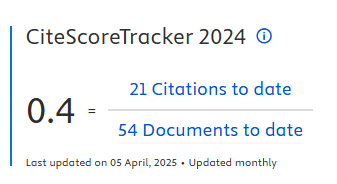The study of innovation and absorptive capacity of BRICS countries by using multiple regression analysis
DOI:
https://doi.org/10.5585/iji.v10i1.20717Keywords:
National innovation system, Innovation capacity, Absorptive capacity, Economic growth, Multi-Regression analysis, Brazil, Russia, India, China and South Africa (BRICS).Abstract
Objective of the study: This research aims to explore the diverse impacts of national innovation systems of BRICS countries by indicating the key elements and systems aspect, how these aspects have committed to the running of the whole systems and interpreted inside the economic development of these nations.
Methodology/approach: Data were collected from the World Bank (WDI), United Nations Educational, Scientific and Cultural Organization (UNESCO), United State Patent and Trade office (USPTO), and World Intellectual Property Organization (WIPO) for Brazil, Russia, India, China and South Africa (BRICS) countries. Data used for following research are time series, annual data from 1999-2014. The multi-regression analysis was completed with utilizing the Statistical package for the Social Science (SPSS).
Originality/Relevance: We intend at devoting to the research literature and policy by producing quantitative based proof of the framework that connects the comprehensive element of innovation system to economic system for a longtime.
Main results: The findings showed the degree to which components of the National innovation system (NIS), depend on one another for Brazil, Russia, India, China and South Africa (BRICS) , in this regard, any changes in one indicator can effect on other indicators in the system.
Theoretical/methodological contributions: Our research is based on the conceptual analyses which draw from the existing literature. It is based on a model to evaluate the dynamics of innovation capacity, absorptive capacity impact and robustness of the economic development.
Social /management contributions: Our results have significant implication for policy makers.
Downloads
References
Abayomi, K., Gelman, A., & Levy, M. (2008). Diagnostics for multivariate imputations. Journal of the Royal Statistical Society. Series C: Applied Statistics, 57(3), 273–291. https://doi.org/10.1111/J.1467-9876.2007.00613.X
Abramovitz, M. & David, P. A. (1996). Convergence and deferred catch-up: productivity leadership and the waning of American exceptionalism. The Mosaic of Economic Growth, 21–62.
Acemoglu, D., Zilibotti, F., & Aghion, P. (2006). Distance To Frontier, Selection, and Economic Growth. Journal of the European Economic Association, 4(March), 37–74. https://doi.org/10.1162/jeea.2006.4.1.37
Alnafrah, I. (2019). Dynamic structural comparison of BRICS national innovation systems based on machine learning techniques. International Journal of Technological Learning, Innovation and Development, 11(3), 265–290. https://doi.org/10.1504/IJTLID.2019.102681
Alnafrah, I., Al Naimi, K., & Ahmad, M. (2018). A comparative analysis of national innovation systems’ structures and their developmental impacts (Evidences from BRICS countries). Economics and Environmental Management, 1(32), 13–20. https://doi.org/10.17586/2310-1172-2018-11-1-13-20
Alnafrah, I., & Bogdanova, E. (2018). National innovation system and its role in increasing GDP per capita (Evidence from Russia). Journal of Economic Regulation, 9(1), 33–39. https://doi.org/10.17835/2078-5429.2018.9.1.033-039
Alnafrah, I., & Zeno, B. (2019). A new comparative model for national innovation systems based on machine learning classification techniques. Innovation and Development, 10(1), 45–66. https://doi.org/10.1080/2157930x.2018.1564124
Arthur, D., Pang, S., Wong, T., Alexander, M. F., Drury, J., Eastwood, H., … Xiao, S. (1999). Caring attributes, professional self concept and technological influences in a sample of Registered Nurses in eleven countries. International Journal of Nursing Studies, 36(5), 387–396. https://doi.org/10.1016/s0020-7489(99)00035-8
Azariadis, C., Drazen, A. (1990). Threshold Externalities in Economic Development. The Quarterly Journal of Economics, 105(2), 501–526. https://doi.org/10.2307/2937797
Balzat, M., & Hanusch, H. (2004). Recent trends in the research on national innovation systems. Journal of Evolutionary Economics, 14(2), 197–210 https://doi.org/10.1007/s00191-004-0187-y
Banerjee, Anindya and Carrion-i-Silvestre, Josep Lluís,(2006). Cointegration in Panel Data with Breaks and Cross-Section Dependence (February 2006). ECB Working Paper No. 591, http://dx.doi.org/10.2139/ssrn.885322
Banerjee, A., Marcellino, M., & Osbat, C. (2004). Some cautions on the use of panel methods for integrated series of macroeconomic data. Econometrics Journal, 7, 322–340. https://doi.org/10.1111/j.1368-423X.2004.00133.x
Biryukova, O. V., & Matiukhina, A. I. (2019). ICT services trade in the BRICS countries: Special and common features. Journal of the Knowledge Economy, 10(3), 1080–1097. https://doi.org/10.1007/s13132-017-0517-6
Bryman, A., & Bell, E. (2003). Business Research Methods. New York: Oxford University Press, New York.
Carlsson, B., Jacobsson, S., Holmén, M., & Rickne, A. (2002). Innovation systems: analytical and methodological issues. Research Policy, 31, 233–245 https://doi.org/10.1016/S0048-7333(01)00138-X
Cassiolato, J. E., & Vitorino, V. (2009). BRICS and development alternatives: Innovation systems and policies. In BRICS and development alternatives: Innovation systems and policies. https://doi.org/10.7135/UPO9781843318149
Castellacci, F., Archibugi, D. (2008). The technology clubs: The distribution of knowledge across nations. Research Policy, 37(47061), 1659–1673. https://doi.org/10.1016/j.respol.2008.08.006
Castellacci, F., Natera, J. M. (2011). A new panel dataset for cross-country analyses of national systems, growth and development (CANA). Innovation and Development, (39922), 0–29. https://doi.org/10.1080/2157930X.2011.605871
Castellacci, F., & Natera, J. M. (2013). The dynamics of national innovation systems: A panel cointegration analysis of the coevolution between innovative capability and absorptive capacity. Research Policy, 42(3), 579–594. https://doi.org/10.1016/j.respol.2012.10.006
Cohen et al. (2003). Sociablility and suspectaiblility to the common cold. American Psychological Society, 14(5), 389–395. https://doi.org/10.1111/1467-9280.01452
Durlauf, S.N., Johnson, P.A. (1995). Multiple regimes and cross-country growth behaviour. Journal of Applied Econometrics, 10(4), 365–384. https://doi.org/10.1002/jae.3950100404
Edquist, C. (1997). Systems of innovation: Technologies, institutions and organizations. Long Range Planning (Vol. 31).
Emory, C. W., & Cooper, D. R. (1991). Business research methods. Boston: IRWIN, 4 edition.
Fagerberg, J. (1994). Technology and international differences in growth rates. Journal of Economic Literature. https://www.jstor.org/stable/2728605
Fagerberg, J., Srholec, M., & Knell, M. (2007). The Competitiveness of Nations: Why Some Countries Prosper While Others Fall Behind. World Development, 35(10), 1595–1620. https://doi.org/10.1016/j.worlddev.2007.01.004
Fagerberg, J., & Verspagen, B. (2002). Technology-gaps, innovation-diffusion and transformation: an evolutionary interpretation. Research Policy, 31, 1291–1304. https://doi.org/10.1016/S0048-7333(02)00064-1
Field, a. (2005). Factor analysis using SPSS. Retrieved December, 8057, 1–14.
Filippetti, A., & Peyrache, A. (2011). The Patterns of Technological Capabilities of Countries: A Dual Approach using Composite Indicators and Data Envelopment Analysis. World Development, 39(7), 1108–1121.
Freeman, C. (1987). Technology Policy and Economic Performance: Lesson from Japan. Pinter, London, UK.
Freeman, C. (2004). Technological infrastructure and international competitiveness. Industrial and Corporate Change, 13(3), 541–569 https://doi.org/10.1093/icc/dth022
Furman, J. L., & Hayes, R. (2004). Catching up or standing still? National innovative productivity among “follower” countries, 1978-1999. Research Policy, 33(9), 1329–1354. https://doi.org/10.1016/j.respol.2004.09.006
Furman, J. L., Porter, M. E., & Stern, S. (2002). The determinants of national innovative capacity. Research Policy, 31(2002), 899–933. https://doi.org/10.1016/S0048-7333(01)00152-4
Galor, O., & Weil, D. N. (2000). Population, Technology, and Growth: From Maithusian Stagnation to the Demographic Transition and Beyond. The American Economic Review, 90(4), 806–828. https://doi.org/10.1257/aer.90.4.806
Hall, C. J., Jordaan, A., & Frisk, M. G. (2010). The historic influence of dams on diadromous fish habitat with a focus on river herring and hydrologic longitudinal connectivity. Landscape Ecology, 26(1), 95–107. https://doi.org/10.1007/s10980-010-9539-1
Howitt, P. (2000). Endogenous Growth and Cross-Country Income Differences. The American Economic Review, 90(4), 829–846. https://doi.org/10.1257/aer.90.4.829
Howitt, P., & Mayer-Foulkes, D. (2005). R&D, implementation, and stagnation: A schumpeterian theory of convergence clubs. Journal of Money Credit and Banking, 37(1), 147–177. https://doi.org/10.1353/mcb.2005.0006
Hu, M.-C., & Mathews, J. A. (2005). National innovative capacity in East Asia. Research Policy, 34(9), 1322–1349 https://doi.org/10.1016/j.respol.2005.04.009
Huang, W., & Eling, M. (2013). An efficiency comparison of the non-life insurance industry in the BRIC countries. European Journal of Operational Research, 226(3), 577–591. https://doi.org/10.1016/j.ejor.2012.11.008
Lee, K., & Kim, B. Y. (2009). Both Institutions and Policies Matter but Differently for Different Income Groups of Countries: Determinants of Long-Run Economic Growth Revisited. World Development, 37(3), 533–549 https://doi.org/10.1016/j.worlddev.2008.07.004
Lundvall, B. A. (2007). National Innovation Systems - Analytical Concept and Development Tool. Industry & Innovation, 14(1), 95–119. https://doi.org/10.1080/13662710601130863
Nasierowski, W., & Arcelus, F. J. (1999). Interrelationships among the elements of national innovation systems: a statistical evaluation. European Journal of Operational Research, 119(2), 235–253. https://doi.org/10.1016/S0377-2217(99)00128-9
Nelson, R. R., & Nelson, K. (2002). Technology , institutions , and innovation systems, Research Policy, 31(2), 265–272. https://doi.org/10.1016/S0048-7333(01)00140-8
Nelson, R. R., & Winter, S. G. (1977). In search of useful theory of innovation. Research Policy, 6(1), 36–76. https://doi.org/10.1016/0048-7333(77)90029-4
Nilsson, M. (2011). Policy coordination in systems of innovation : A structural-functional analysis of regional industry support in Sweden.
Niosi, J., Saviotti, P., Bellon, B., & Crow, M. (1993). National systems of innovation: in search of a workable concept. Technology in Society, 15(2), 207–227. https://doi.org/10.1016/0160-791X(93)90003-7
Porter and Stern. (2001). Innovation: Location Matters. MIT Sloan Management Review, 42(4):28-36.
Porter, M and Stern, S. (. (1999). The New Challenge to America’s Prosperity: Finding from the Innovation Index, Council on Competitiveness, Washington, D.C., March.
Radosevic, S. (1998). The Transformation of National Systems of Innovation in Eastern Europe: Between Restructuring and Erosion. Industrial and Corporate Change , 7 (1 ), 77–108. https://doi.org/10.1093/icc/7.1.77
Rao-Nicholson, R., Vorley, T., & Khan, Z. (2017). Social innovation in emerging economies: A national systems of innovation based approach. Technological Forecasting and Social Change, 121, 228–237. https://doi.org/10.1016/j.techfore.2017.03.013
Saunders, M., Lewis, P., & Thornhill, A. (2003). Research Methods for Business Students. Chapter 4: Understanding research philosophy and approaches to theory development.
Scerri, M., Clara Couto Soares, M., & Maharajh, R. (2010). Comparative report on innovation systems and inequality in the BRICS. From the research project: National Innovation Systems of BRICS countries. (IDRC Center file 104227-001).
Sharif, N. (2006). Emergence and development of the National Innovation Systems concept. Research Policy, 35(5), 745–766. https://doi.org/10.1016/j.respol.2006.04.001
Song, M. L., Zhang, L. L., Liu, W., & Fisher, R. (2013). Bootstrap-DEA analysis of BRICS’ energy efficiency based on small sample data. Applied Energy, 112, 1049–1055. https://doi.org/10.1016/j.apenergy.2013.02.064
Smith, E. (2008). Using Secondary Data in Educational and Social Research, 249.
Suarez-Villa, L. (1990). Inventions, inventive learning and innovative capacity. Behavioral Science, 35(4), 290–310. https://doi.org/10.1002/bs.3830350404
Tu, C. J., Chang, M. C., & Chen, C. P. (2016). Progressive time-weighted dynamic energy efficiency, energy decoupling rate, and decarbonization: An empirical study on G7 and BRICS. Sustainability (Switzerland), 8(9). https://doi.org/10.3390/su8090928
Zabala-Iturriagagoitia, J. M., Aparicio, J., Ortiz, L., Carayannis, E. G., & Grigoroudis, E. (2020). The productivity of national innovation systems in Europe: Catching up or falling behind? Technovation, 102215. https://doi.org/10.1016/j.technovation.2020.102215
Zaichenko, S. (2014). National innovation system and inequality in Russia. In Inequality and development challenges, (pp.80–148) Routledge. https://doi.org/10.4324/9781315734170-3
Downloads
Published
How to Cite
Issue
Section
License
Copyright (c) 2022 International Journal of Innovation

This work is licensed under a Creative Commons Attribution-NonCommercial-ShareAlike 4.0 International License.
- Abstract 665
- PDF 548













